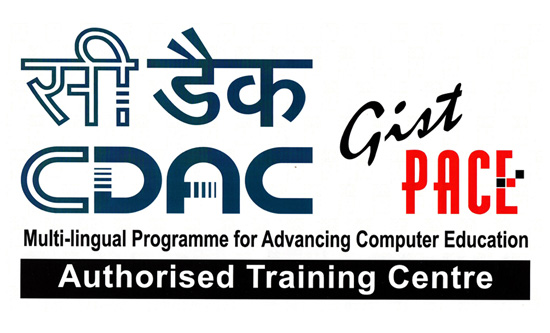DATA SCIENCE TRAINING WITH AI ML DL
Artificial Intelligence (AI) is the simulation of human intelligence in machines.AI includes various subfields like Machine Learning, Natural Language Processing, and Robotics. AI is used in applications such as chatbots, recommendation systems, and autonomous vehicles.Machine Learning (ML) is a subset of AI that enables computers to learn from data without being explicitly programmed. ML is used in spam detection, image recognition, and financial forecasting.Deep Learning (DL) is a specialized form of ML that uses neural networks to process complex patterns in large datasets. It includes architectures like CNNs (Convolutional Neural Networks) and RNNs (Recurrent Neural Networks).
GN Infotech provides the best Artificial Intelligence, Machine Learning, Deep Learning Training in Khanna with below mentioned course curriculum. GN Infotech labs are equipped with latest software so that students can get 100% practical training.
At the completion of training the participant will exhibit the following :
- - Hands-on experience setting up an integrated analysis environment for doing AI ML and DL with Python.
- - Setting up the Python Environment, Install Python (Anaconda or standalone)
- - Using the Jupyter Notebook and Google Colab Tools
- - An understanding of how to use the Python standard library NumPy, Pandas, TensorFlow, .
- - Modeling data (e.g., machine learning)
- - Deep practical knowledge of AI, Machine Learning and Deep Learning, Natural Language Processing (NLP)
- - Robotics: AI in physical machines
- - Types of ML(Supervised Learning, Unsupervised Learning, Reinforcement Learning)
- - Applications of ML:
- Recommendation systems (Netflix, Amazon)
- Fraud detection
- Image classification
Why Artificial Intelligence, Machine and Deep Learning Training At GN Infotech?
- - Industry Compliant Syllabus
- - Multi-Platform Demonstration
- - Product Based Training
- - Real-Time Case Studies
- - Use of Latest Tools & Technology
- - LCD equipped class room
- - Unlimited Lab facility
- - Faculty drawn from Industries
- - Daily Handouts & Lab Exercise
- - Workshops on New Technologies
TARGET AUDIENCE :
- - Machine Learning Engineer, AI Developer
Overview of AI and Machine Learning
Python basics review
Data types, variables, operators
Control structures (if, loops)
Functions and modules
Python libraries for AI and ML
Numpy, Pandas, Matplotlib, Scikit-learn
Setting up the environment (Anaconda, Jupyter Notebook, Google Colab)
• Understanding datasets
Importing datasets using Pandas
Data cleaning:
Handling missing values
Dealing with duplicates
Data type conversions
Feature engineering
Scaling and normalization
Encoding categorical variables
Feature selection techniques
Data visualization
Matplotlib
Seaborn (correlation heatmap, pairplot, etc.)
What is Machine Learning?
Types of Machine Learning
Supervised Learning
Unsupervised Learning
Reinforcement Learning
Training vs. Testing data
Introduction to ML workflow
Problem definition
Data collection
Model building
Model evaluation
Part 1:Data Structures
Regression techniques
Linear Regression
Polynomial Regression
Ridge and Lasso Regression
Classification techniques
Logistic Regression
Decision Trees
Random Forests
K-Nearest Neighbors (KNN)
Support Vector Machines (SVM)
Model evaluation metrics
RMSE, MAE (Regression)
Accuracy, Precision, Recall, F1 Score (Classification)
• Clustering algorithms
K-Means Clustering
Hierarchical Clustering
DBSCAN
Dimensionality reduction techniques
Principal Component Analysis (PCA)
t-SNE
Anomaly detection
Introduction to ensemble methods
Bagging techniques
Random Foress
Boosting techniques
AdaBoost
Gradient Boosting
XGBoost
LightGBM
Introduction to Deep Learning and Neural Networks
Perceptron model and activation functions
Forward and backward propagation
Introduction to TensorFlow and Keras
Building basic neural networks using Keras
Convolutional Neural Networks (CNN)
Image processing basics
Building CNN models
Transfer learning (e.g., VGG, ResNet)
Recurrent Neural Networks (RNN)
Time-series data
LSTMs and GRUs
Autoencoders
• Introduction to NLP
Text preprocessing
Tokenization
Stopword removal
Stemming and Lemmatization
Vectorization techniques
Bag of Words (BoW)
TF-IDF
Word Embeddings (Word2Vec, GloVe)
Sentiment analysis
Building a chatbot using NLP
Fundamentals of Reinforcement Learning
Markov Decision Process (MDP)
Q-Learning and Deep Q-Learning
Applications of reinforcement learning
Game playing
Robotics
Hyperparameter tuning
Grid search
Random search
Bayesian optimization
Cross-validation techniques
Overfitting and underfitting
Regularization techniques
Bias and fairness in AI models
Model interpretability
SHAP and LIME
Data privacy and security concerns
Ethical implications of AI
Predictive analytics (e.g., stock price prediction)
Classification problems (e.g., spam email detection)
NLP-based projects (e.g., sentiment analysis)
Computer Vision tasks (e.g., face recognition, object detection)
Reinforcement learning games (e.g., tic-tac-toe, maze solving)
Saving and loading models (Pickle, Joblib)
Introduction to Flask/Django for ML deployment
Deploying models with cloud services (AWS, Azure, GCP)
Using Docker for containerization


